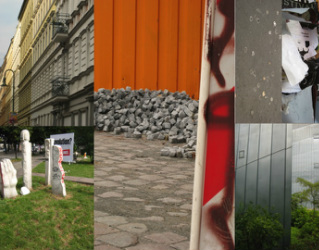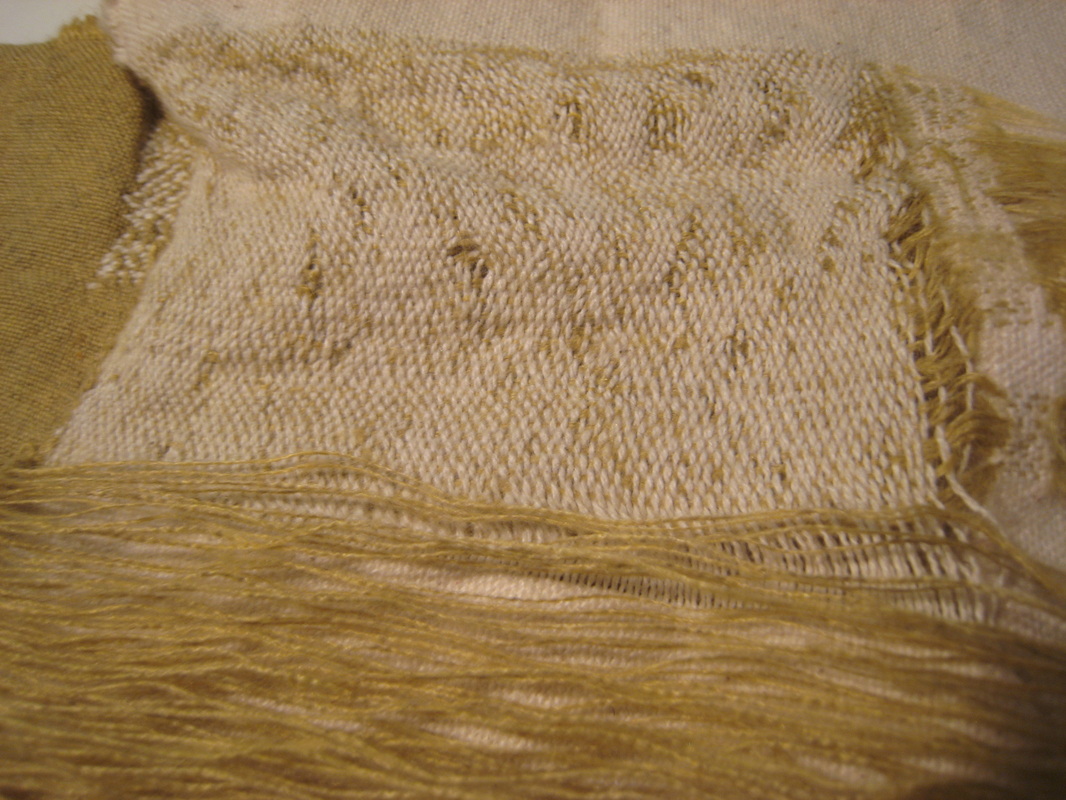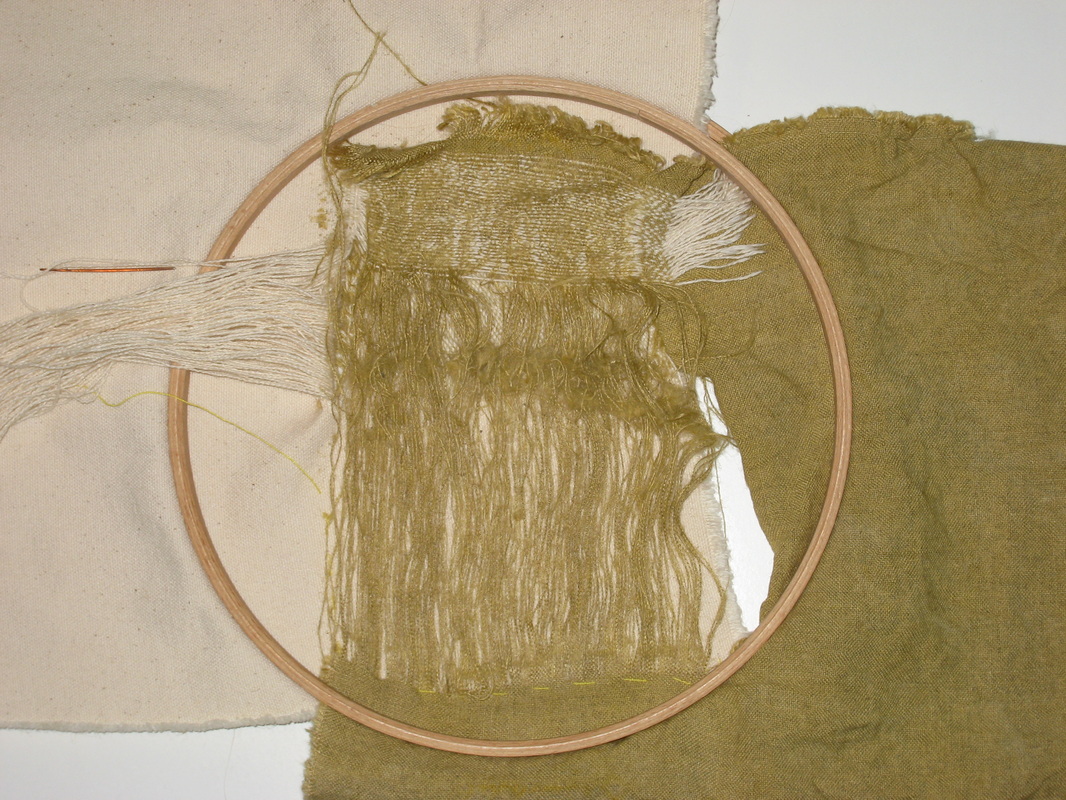The first thing that I have started to consider in my work is the materials I use. My work is pared down, abstract; and therefore the materials I use are very important as they are a large part of the subject of the work; very much visible.
First, an aside. I have navigated Berlin, where I have been for just over a week now in an ambiguous place between tourist and resident - one district at a time, soaking up textures, distracted by the play of materiality. From now pristine 19th Century stucco buildings, to layers of flyers unceremoniously pasted on walls, to building sites pretty much everywhere. Contrasts of cobbled streets and matt tarmac shining with beer bottles worn into its surface. Public buildings have offered the chance for architects to experiment while public art is sometimes valued as a surface rather than respected for its substance.
In my work - like the piece below, still in progress, fusing cotton duck with saffron-dyed linen - I consciously use materials that convey a ‘fine art’ status. The canvas is a signifier that I see myself working in the tradition of painting rather than craft or sculpture, both of which are more often associated with the study of the physicality of materials. It offers people a suggestion, therefore, to read my work as exploring the role of painting as a window on the world versus an object. There is the essence of fabric – its weft and its warp – which I present through unpicking and re-sewing, reducing material density, producing a means to see through the fabric, drawing an awareness to the reverse side. Dying the canvas means colour is part of the material, not added to it. I engage intimately, one thread at a time, but the overall repetition of resewing creates difference, distorting the regularity of the machine-made weave. Finally, there is an authenticity that materials imbue, through their physicality, which is important to me. And, as Walter Benjamin wrote, distinguishes the original from copies, giving art its indestructible aura.



 RSS Feed
RSS Feed
